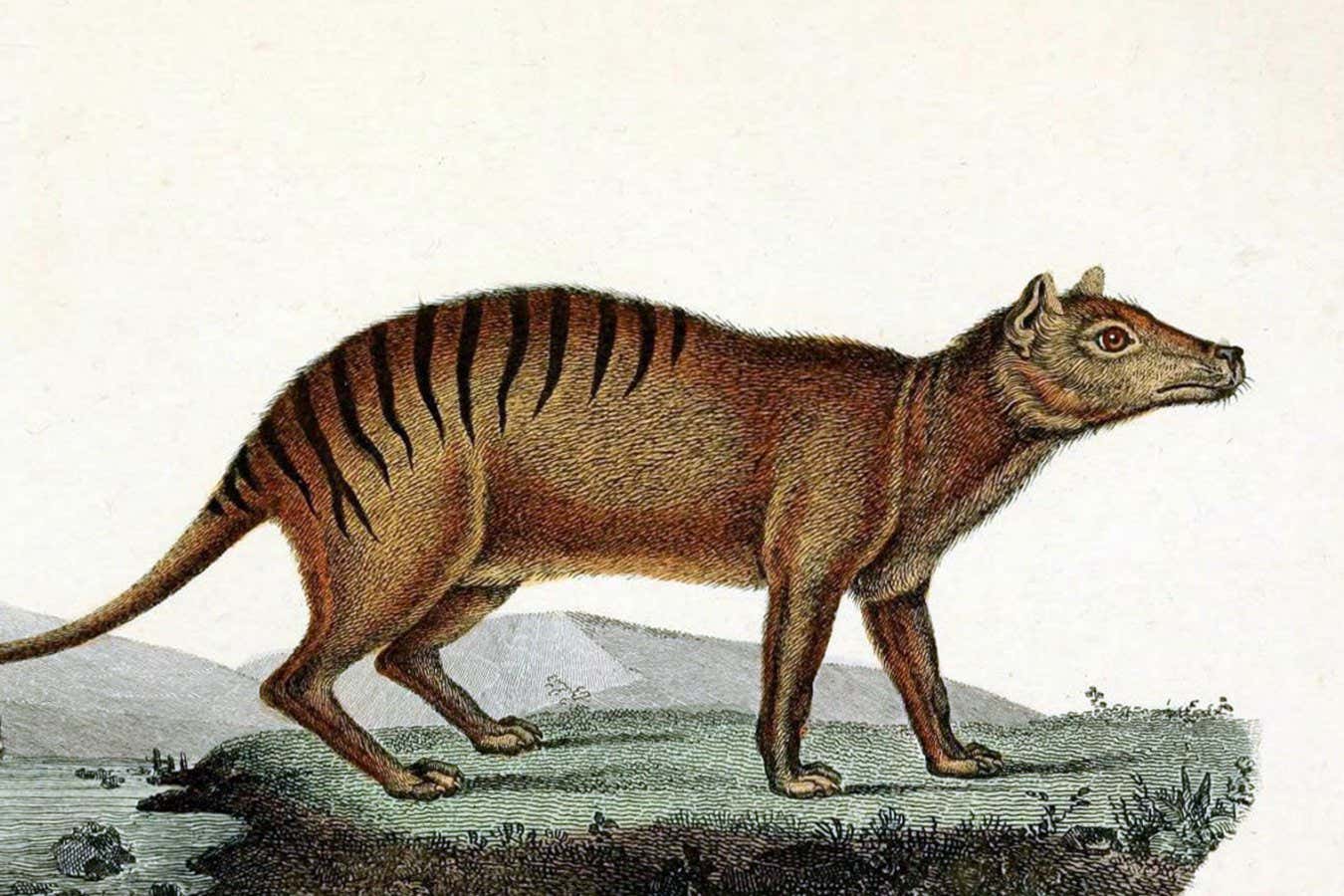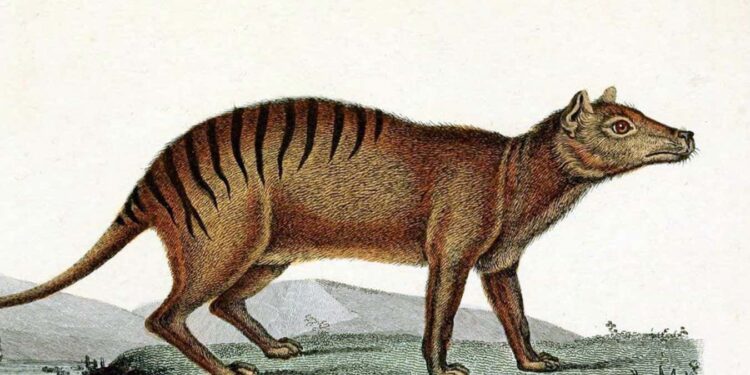
Thylacines were once found throughout Australia and New Guinea
Robert Nickelsberg/Getty Images
The loss of crucial genes over millions of years before the arrival of humans in Australia may have left thylacines more vulnerable to extinction.
The thylacine, or Tasmanian tiger (Thylacinus cynocephalus) was the last survivor of a family of marsupials known as Thylacinidae that once lived throughout Australia and New Guinea.
It was extinct on the Australian mainland by 2000 years ago, with hunting by humans and competition from dingoes thought to be major reasons for their decline. After Europeans arrived in Tasmania, the animals were persecuted by farmers and a government bounty, and the last specimen died in Hobart Zoo in 1936.
Nagarjun Vijay and Buddhabhushan Girish Salve at the Indian Institute of Science Education and Research Bhopal first became interested in the genome of the Tasmanian tiger while studying the genome of the Bengal tiger (Panthera tigris tigris).
“We were seeing some parallels between the extinction of the thylacine with our own tiger,” says Vijay. “And there is a lot of impetus to conserve the tiger in India.”
The pair suspected that hypercarnivores like the Bengal tiger and the Tasmanian tiger have, through their evolutionary history, lost genes that may leave them vulnerable when exposed to environmental changes or new diseases.
They analysed genetic records previously recovered from thylacine museum specimens and compared them with the genome of their close relative, the Tasmanian devil (Sarcophilus harrisii), and other marsupials.
In contrast to almost every other marsupial, including Tasmanian devils, thylacines had lost at least four important genes, known as SAMD9L, HSD17B13, CUZD1 and VWA7.
Vijay says they were surprised to discover that the loss of the genes didn’t seem to occur after the Tasmanian population became isolated when sea levels began to rise about 10,000 years ago.
The loss of these genes might have had advantages under certain conditions in the past, but it potentially compromised the species’ health by reducing antiviral defences, metabolic processes, lactation and their susceptibility to cancer and pancreatitis, Vijay and Salve suggest.
Thylacines lost SAMD9L, CUZD1 and VWA7 at least 6 million years ago at a time of massive climate change – a period that saw the species increase dramatically in size and become a hypercarnivore, subsisting almost entirely on meat.
“The overall narrative has always been that it is mostly human intervention, or anthropogenic changes, that have had an effect on the extinction of thylacines,” Vijay says. “And we were thinking, maybe we will see some genes that were lost that are linked to disease and that is what we found.”
Timothy Churchill at the University of New South Wales, Sydney, says there is no doubt that climatic changes in Australia over millions of years before humans arrived led to a dramatic loss of thylacines’ genetic diversity. He says it is also possible that the gene losses reported in the new study could have made Tasmanian tigers more susceptible to disease, but confirming this would require much more research.
“It’s one of those lineages that really kind of backed itself into a corner and managed to eke out its survival in its niche for a long time,” Churchill says. “But then once canids like the dingo arrived, that was the nail in the coffin on the mainland. Then, obviously, once we made them our enemy in Tasmania, that was the end of them.”
Topics:
Source link : https://www.newscientist.com/article/2493844-thylacines-genome-provides-clues-about-why-it-went-extinct/?utm_campaign=RSS%7CNSNS&utm_source=NSNS&utm_medium=RSS&utm_content=home
Author :
Publish date : 2025-08-27 00:00:00
Copyright for syndicated content belongs to the linked Source.









